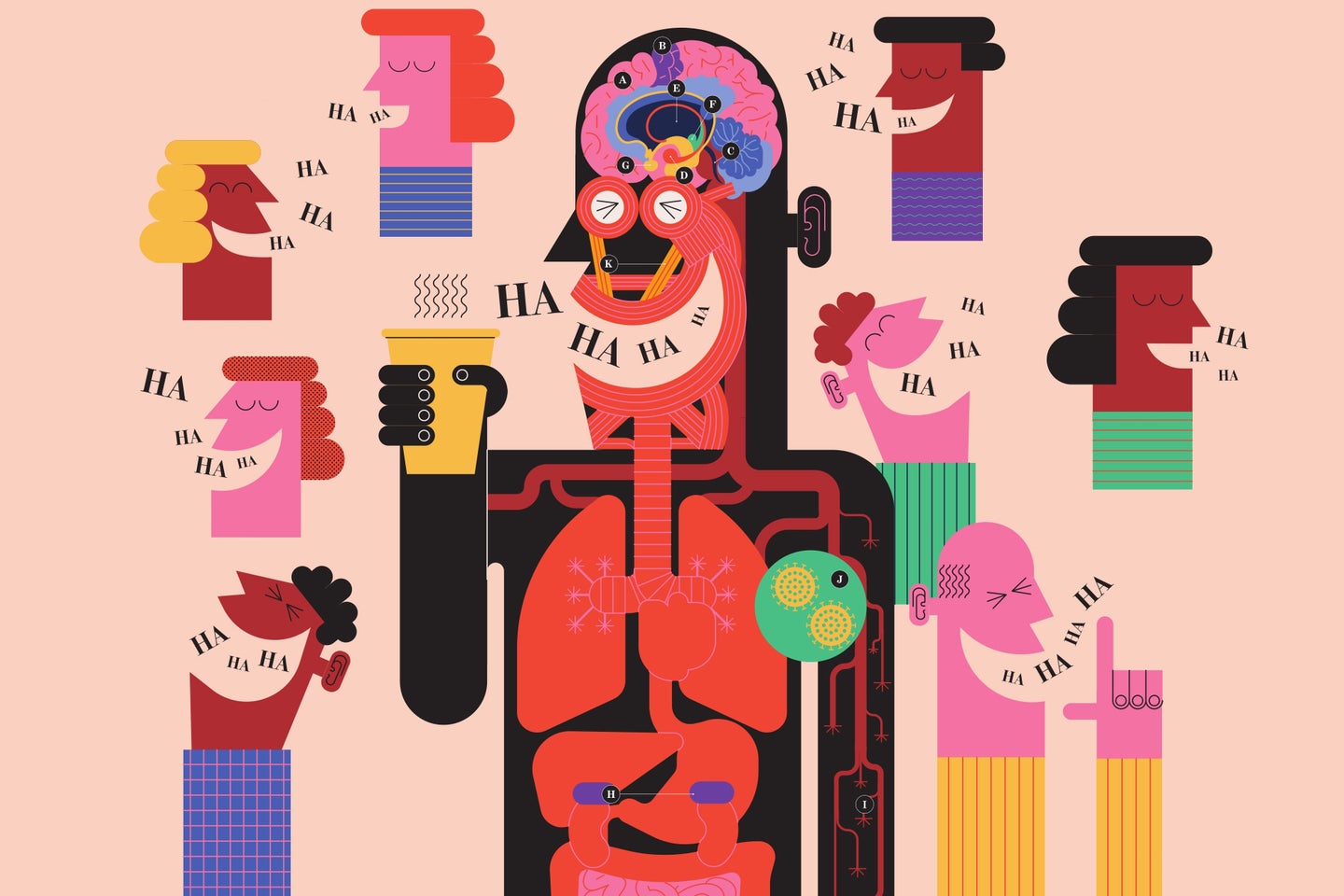Why does laughing feel so stinkin’ good?
The anatomy of a good chuckle, explained.

Popular Science’s Play issue is now available to everyone. Read it now, no app or credit card required.
The oldest known joke dates back nearly 4,000 years, and it’s a fart gag. The fact that we’ve been crackin’ wise for so long suggests there’s something innate about the need to laugh. Heck—chimps, rats, and perhaps even dolphins do it. Neuroscientists and psychologists aren’t sure about the exact evolutionary reason for a chuckle, though its ability to pep us up and promote bonding provide pretty solid clues. Whatever its underlying purpose, here’s how a good ol’ guffaw manifests in your body.
Step 1: When the frontal cortex [A]—an area responsible for decision-making—realizes something is funny, it starts a cascade of neurological responses.
Step 2: One signal hits the motor cortex [B]—which spurs the physical components of a giggle, including diaphragm contractions and head bobs—and then the periaqueductal gray [C], a chunk of nuclei in the brain stem that controls vocalization.
Step 3: Another command hits the amygdala [D], thalamus [E], and hypothalamus [F] (parts of the emotion-regulating limbic system) to trigger the endorphin rush that makes laughing feel so very good.
Step 4: Pings from the hypothalamus prompt the pituitary [G] and adrenal glands [H] to start a wave of calm, in which stress hormones like cortisol and epinephrine dip.
Step 5: Extra endorphins spark joy—and dull physical pain—while relaxed blood vessels [I] help us loosen up.
Step 6: Humor also tickles our immune response through revved-up antibody production and activity in cells called killer Ts and Bs [J]. Docs aren’t sure as to the root of this superpower.
Step 7: Shared tee-hees help develop a sense of belonging. The Duchenne display—a smile controlled by the zygomatic major muscle [K] in your cheeks in which lips curl and eyes narrow—subconsciously signals glee to others.
Step 8: Good-natured chuckles cascade more slowly and at lower frequencies than malicious ones. That distinct sound tips off others that it’s okay if they laugh along.
This story appeared in the Summer 2020, Play issue of Popular Science.